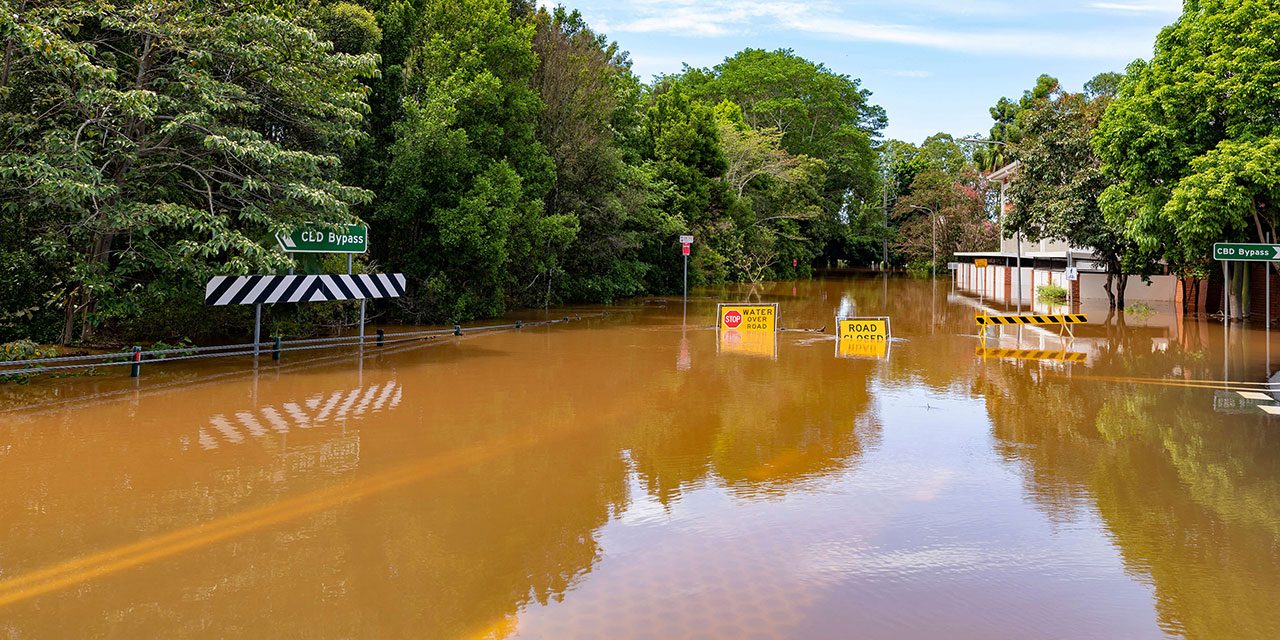This article is from the Australian Property Journal archive
OPINION: ENGAGEMENT with climate related risks is undertaken by organisations in the broader context of their business operations. Domestically, and internationally, organisations are increasingly being required to report on climate change related risks relevant to their portfolios (Cradduck, Warren-Myers, and Schmidt, 2023).
This is done in the process of climate risk reporting, which relates to the development of plans by organisations to identify, and avoid or manage, the hazards associated with climate change related risks as relevant to a business’ operations (Walenta, 2019). Although, currently, Australia has not mandated climate risk reporting obligations, many countries have imposed such reporting obligations and, separately, many organisations – including those with operations in Australia – have chosen to adopt climate risk reporting requirements (IGCC, 2021). Where the business is an institutional client, this is now beginning to be reflected in their instructions to valuers.
As the obligation to report emissions and climate change related risks grows, and as available related information becomes more accessible, there will be a corresponding growth in the need for specific consideration of such matters for real property assets. In turn, in the context of valuing those real property assets, there will be an increasing expectation that valuers will make more specific reference to those events or potential risks in their valuation reports.
Currently, while the impacts of such risks are identified (i.e. noting a flood event), climate change related risks as specific risks are not usually explicitly considered. This could be because of a lack of accurate or available data about past events, limited client instructions, or no past event to trigger the need to include commentary in the valuation report. However, a lack of easy to access information will not necessarily absolve valuers (either now or in the future) from the obligation to consider such events, and the potential impacts to that property in the future.
One issue that has been raised directly with the authors is that there is not in fact easy to access information about climate change’s future impacts. Respectfully, this is not correct. For example, in the context of the availability of both data about climate change per se and its future impacts, this information is readily (and freely) accessible in the 2021 decision of the Federal Court in the Sharma litigation.
While the applicant in that matter was ultimately unsuccessful, the decision itself is significant because Bromberg J sets out clearly the expert evidence about the fact that climate change is occurring, and what the future impacts will be (see Sharma 2021 at [35] – [90]). That evidence was not disputed by the federal government and, as Allsop CJ noted in the Full Court of the Federal Court’s appeal decision (Sharma 2022), this is significant:
- At the outset it is important to appreciate the nature of the proceeding and the basis upon which the case was fought. The evidence led by the respondents (applicants before the primary judge) was not challenged by the appellant, whether by cross-examination or by the leading of contrary or supplementary evidence. This is a matter of some importance. It should not be seen merely as a strategic or tactical choice in a piece of inter partes litigation. This was not a demurrer procedure where the applicants’ case was to be taken at its highest for the purposes of striking out the claim. Evidence was led, on a final basis. Some objections were taken and ruled upon. There was no cross-examination. The appellant is the Minister for the Environment. The Minister is not any litigant. She is the Minister of the Commonwealth responsible, with her Department, for the very type of issue with which the Court was concerned and to which the evidence was directed. There are challenges to some of the primary judge’s findings (which should be rejected), but, by and large, the nature of the risks and the dangers from global warning, including the possible catastrophe that may engulf the world and humanity was not in dispute. (Sharma 2022 at [2] emphasis added)
As the science progresses, and as more climate risk related events occur, more current data is accessible from government and other sources. The enhancement, increased availability, and transparency of related information and tools; places an increased onus on valuers to ensure accuracy in reporting and documenting of climate change related risks and emissions profiles for assets.
State and local governments are continuously seeking to update the information they hold and make available. Noting specifically that after the early-2022 flood events, many local governments in Queensland now have issued updated flood information and or overlays. This type of information is considered by the Courts in reviewing development applications (Cradduck, Warren-Myers, and Stringer, 2020); and, as noted above, more broadly (Sharma, 2022; Sharma, 2021).
Valuers too should ensure that they engage with the most current data available, and use all available tools and search engines for this purpose.
A failure to engage with all readily available information, and/or tools, may be a breach of required valuation standards and the API’s Code of Ethics. A failure to identify and engage with all relevant risks therefore may leave a valuer open to being both disciplined and sued.
This article was contributed by Associate Professor Georgia Warren-Myers and Associate Professor Lucy Cradduck with funding from the Australian Property Research and Education Fund, for the project: Valuation @ Risk
Please contact the researchers Dr Georgia Warren-Myers g.warrenmyers@unimelb.edu.au or Associate Professor Lucy Cradduck l.cradduck@qut.edu.au for more information.
Reference List
Cradduck, L., Warren-Myers, G., and Schmidt, M. (2023) The obligation to report climate risks: What, Who, and How? In Proceedings from the Pacific Rim Real Estate Society (PRRES) Conference 2023, Australia, Sydney, 15-17 January 2023.
Cradduck, L., Warren-Myers, G., and Stringer, B. (2020) “Courts’ views on climate change inundation risks for developments: Australian perspectives and considerations for valuers”. Journal of European Property Research, 13(2), 435-453.
IGCC 2021. Full Disclosure: Improving corporate reporting on climate risk. Energectics, Australia.
Minister for the Environment v Sharma [2022] FCAFC 35 (Sharma 2022)
Sharma v Minister for the Environment [2021] FCA 560 (Sharma 2021)
Walenta, J. 2019. “Climate risk assessments and science-based targets: A review of emerging private sector climate action tools”. WIREs Climate Change, 11.e628. https://doi.org/10.1002/wcc.628.





